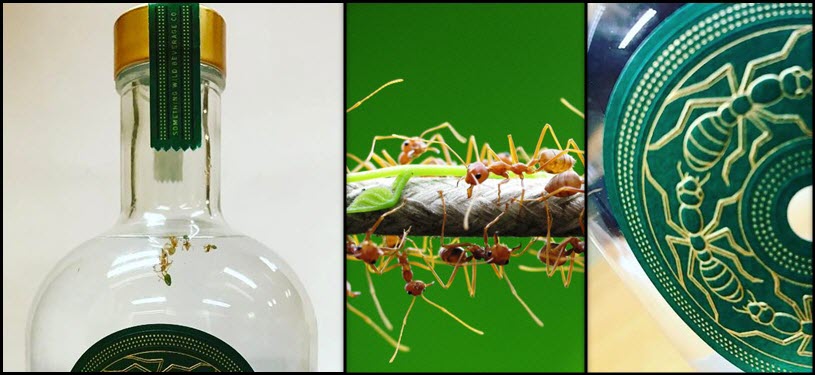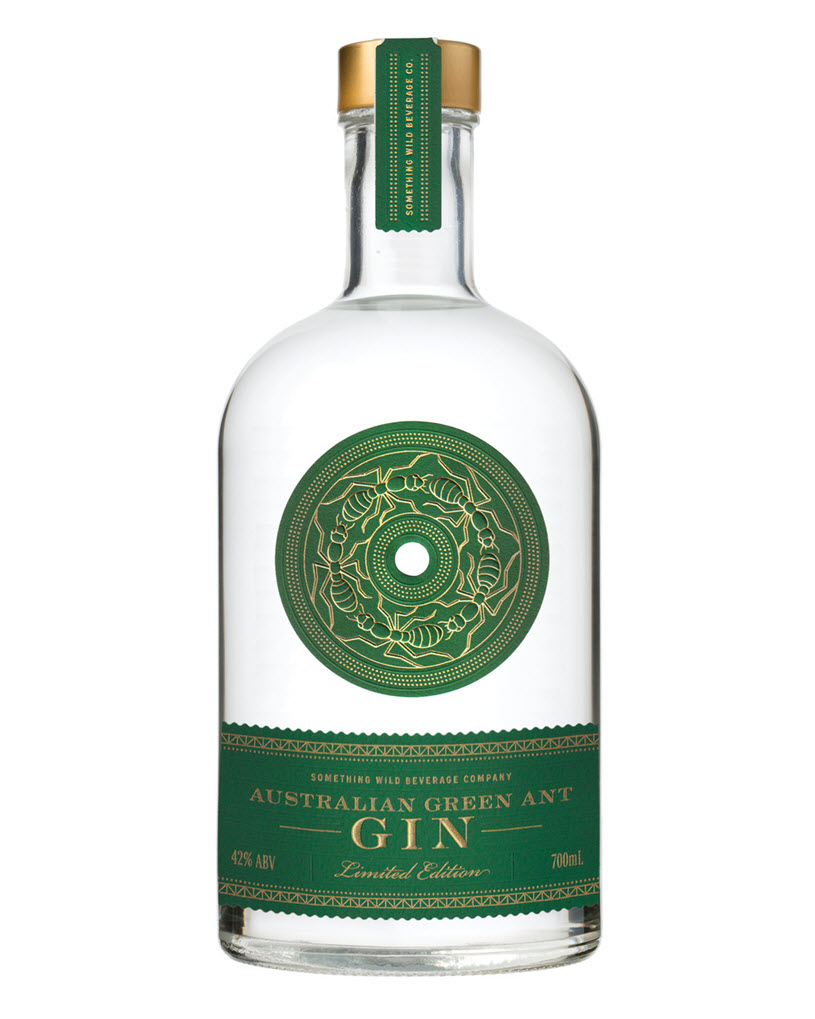
The Buzz About Green Ant Gin Infusion: A Zesty Adventure in Mixology
The world of gin, already a kaleidoscope of botanicals and aromatic profiles, is constantly evolving. Among the more adventurous and intriguing innovations is the rise of Green Ant Gin Infusion. This isn’t your grandmother’s gin; it’s a bold exploration of indigenous flavors, offering a unique sensory experience that’s both refreshing and surprisingly complex. If you’re a gin enthusiast looking to push the boundaries of your palate or a curious mixologist seeking a novel ingredient, green ant gin infusion is an adventure worth embarking on.
What Exactly is Green Ant Gin Infusion?
At its core, green ant gin infusion involves steeping dried or fresh green ants (scientifically known as Oecophylla species) in gin for a period of time. The ants, particularly those native to Australia, possess a distinct citrusy, lemony, and slightly herbaceous aroma and flavor. This is largely due to the formic acid they produce as a defense mechanism, which, when consumed in controlled quantities and forms, translates into a vibrant tang that can elevate a gin’s profile.

The infusion process extracts these volatile oils and acids from the ants, imbuing the gin with their characteristic zest. The result is a gin that offers a bright, zesty kick, often described as having notes of lime, lemongrass, and a subtle, almost peppery, herbaceousness. It’s a flavor profile that stands apart from traditional citrus-forward gins, offering a more nuanced and earthy citrus experience.
The Origins and Cultural Significance
The use of green ants as a food source and flavoring agent is deeply rooted in the culinary traditions of Indigenous Australians, particularly in the Northern Territory and Queensland. For thousands of years, these resourceful communities have utilized the ants and their larvae for their nutritional value and their distinct flavor. The ants were often consumed directly, used to add zest to dishes, or even brewed into traditional drinks.
The modern trend of green ant gin infusion is a testament to the growing appreciation for indigenous ingredients and the innovative spirit of contemporary mixology. It’s a way of honoring ancient traditions while introducing these unique flavors to a global audience. This fusion of ancestral knowledge and modern craft is what makes green ant gin infusion so compelling.
The Flavor Profile: A Deeper Dive
The appeal of green ant gin lies in its complex and refreshing flavor. Unlike the sharp, sometimes artificial, tang of synthetic citrus flavors, the zest from green ants is more natural and multifaceted.
- Citrus Zest: The most prominent characteristic is a bright, zesty citrus note, reminiscent of lime or grapefruit peel. However, it’s not as sweet as lemon or as bitter as some other citrus fruits. It’s a clean, invigorating tang.
- Herbaceous Undertones: Beyond the citrus, there’s often a subtle herbaceous quality. This can manifest as hints of lemongrass, coriander, or even a very mild peppery note, adding layers of complexity.
- Subtle Acidity: The formic acid, while responsible for the zest, contributes a gentle acidity that can cut through richer flavors, making it an excellent palate cleanser and a fantastic companion to food.
- Uniqueness: What truly sets it apart is its distinctiveness. It doesn’t directly replicate any single botanical but creates its own unique aromatic signature.

Why Infuse Gin with Green Ants?
The benefits of green ant gin infusion are numerous for both the home enthusiast and the professional bartender:
- Elevated Cocktail Potential: The unique flavor profile of green ant gin opens up a world of cocktail possibilities. It can add a surprising twist to classic gin cocktails like a G&T, a Martini, or a Gimlet, and it forms the base for entirely new creations.
- Natural and Sustainable Sourcing: When sourced responsibly, green ants can be a sustainable ingredient. This aligns with the growing consumer demand for ethically produced and environmentally conscious products.
- A Conversation Starter: Serving a cocktail made with green ant gin is guaranteed to spark curiosity and conversation. It’s a unique ingredient that tells a story.
- Exploring Indigenous Flavors: It offers a tangible way to experience and appreciate the rich biodiversity and culinary heritage of indigenous cultures.
- A Refreshing Alternative: For those seeking a gin with a less traditional profile, green ant infusion provides a wonderfully zesty and invigorating alternative.
How is Green Ant Gin Infused?
The process of creating green ant gin infusion is relatively straightforward, though attention to detail and quality ingredients are key.
- Sourcing the Ants: This is the most crucial step. Ideally, one would source ethically harvested, dried green ants from reputable suppliers. Fresh ants can also be used, but they require careful handling and may have a shorter shelf life. It’s essential to ensure the ants are sourced sustainably and legally, respecting indigenous rights and environmental conservation.
- Choosing the Gin: A neutral, London Dry style gin is often a good starting point as its botanicals won’t overpower the delicate flavor of the ants. However, more complex gins can also be experimented with, depending on the desired outcome.
- The Infusion Process:
- Ratio: A general starting point is around 10-20 grams of dried green ants per liter of gin. This can be adjusted based on personal preference and the intensity of the ants.
- Container: Use a clean, airtight glass jar or bottle.
- Steeping: Add the ants to the gin and seal the container. Store it in a cool, dark place.
- Duration: The infusion time can vary, typically ranging from 24 hours to a week. It’s advisable to taste the gin periodically to monitor the flavor development. Over-infusing can lead to an overly acidic or bitter taste.
- Straining: Once the desired flavor is achieved, carefully strain the gin through a fine-mesh sieve or cheesecloth to remove all the ants. For an even clearer infusion, a coffee filter can be used.
- Bottling and Aging (Optional): The infused gin can be bottled and stored. Some find that a short aging period (a few days to a week) in a sealed bottle allows the flavors to meld and mellow further.
Safety and Considerations
While green ants are a traditional food source, it’s important to approach their use in infusions with caution:
- Allergies: As with any new food ingredient, there’s a potential for allergic reactions. Start with a small amount if you have any concerns.
- Source: Always ensure your ants are sourced from reputable, ethical, and legal suppliers.
- Hygiene: Maintain strict hygiene throughout the infusion process.
- Moderation: The formic acid, while providing flavor, should be consumed in moderation. The infusion process dilutes it significantly, making it safe for consumption in drinks.
Recipes Featuring Green Ant Gin Infusion
Here are a few ideas to get you started with your green ant gin infusion:
Recipe 1: The Zesty Green Ant Gin & Tonic (G&T)
This is the simplest and perhaps most classic way to enjoy the unique flavor of green ant gin.
Ingredients:
- 50ml Green Ant Gin Infusion
- 100-150ml Premium Tonic Water (adjust to your preference)
- Ice cubes
- Garnish: A lime wheel or a sprig of fresh mint
Instructions:
- Fill a highball glass or a copa glass with ice cubes.
- Pour in the Green Ant Gin Infusion.
- Gently top up with chilled tonic water.
- Stir gently to combine.
- Garnish with a lime wheel or a sprig of mint.
Why it works: The crispness of the tonic water complements the zesty notes of the green ant gin, creating a wonderfully refreshing and aromatic drink. The mint adds an extra layer of herbaceousness.
Recipe 2: The Ant’s Kiss Martini
A sophisticated twist on the classic Martini, highlighting the subtle complexity of the green ant gin.
Ingredients:
- 60ml Green Ant Gin Infusion
- 10ml Dry Vermouth (adjust to your preference for dryness)
- Ice cubes
- Garnish: A lemon twist or an olive
Instructions:
- Fill a mixing glass with ice cubes.
- Add the Green Ant Gin Infusion and dry vermouth.
- Stir well for about 30 seconds until thoroughly chilled.
- Strain the mixture into a chilled Martini glass.
- Garnish with a lemon twist (for extra citrus aroma) or an olive.
Why it works: The dry vermouth provides structure, while the green ant gin offers a vibrant, citrusy depth that makes this Martini incredibly moreish and complex.
Recipe 3: The Outback Sour
A tangy and refreshing sour cocktail that balances sweetness, acidity, and the unique flavor of green ants.
Ingredients:
- 50ml Green Ant Gin Infusion
- 25ml Fresh Lemon Juice
- 15ml Simple Syrup (1:1 sugar to water ratio)
- 1 Egg White (optional, for a silky texture)
- Ice cubes
- Garnish: A dash of Angostura bitters and a few drops of green ant infusion on top (optional)
Instructions:
- If using egg white, combine all ingredients (gin, lemon juice, simple syrup, egg white) in a cocktail shaker without ice. Shake vigorously for about 15-20 seconds (this is called a "dry shake" and helps emulsify the egg white).
- Add ice cubes to the shaker and shake again until well-chilled (a "wet shake").
- Double strain the mixture into a chilled coupe or rocks glass.
- If desired, add a few drops of green ant infusion on top for an aromatic accent, or a dash of Angostura bitters.
Why it works: The tartness of the lemon juice is beautifully balanced by the sweetness of the simple syrup, while the green ant gin provides a unique, zesty backbone. The egg white creates a luxurious mouthfeel.
Recipe 4: DIY Green Ant Gin Infusion
For the adventurous home bartender!
Ingredients:
- 750ml High-quality London Dry Gin
- 15-20 grams Dried Green Ants (ethically sourced)
- Clean, airtight glass jar or bottle
Instructions:
- Ensure your jar or bottle is thoroughly clean and dry.
- Add the dried green ants to the jar.
- Pour the gin over the ants, ensuring they are fully submerged.
- Seal the jar tightly.
- Store in a cool, dark place.
- Infuse for 24-72 hours. Taste the gin every 12-24 hours to gauge the flavor. Be careful not to over-infuse, as it can become too acidic.
- Once the desired flavor is achieved, strain the gin through a fine-mesh sieve lined with cheesecloth or a coffee filter to remove all solids.
- Bottle the infused gin in a clean bottle and label it clearly. Allow it to rest for a few days before using for optimal flavor melding.
Tips for DIY Infusion:
- Start small: If it’s your first time, try infusing a smaller batch (e.g., 250ml) to experiment with ratios and time.
- Experiment with gin: While London Dry is recommended, try infusing other styles of gin to see how the botanicals interact.
- Fresh vs. Dried: Dried ants are generally easier to work with and provide a more consistent flavor. If using fresh ants, ensure they are clean and handle them with care.
The Future of Green Ant Gin Infusion
As awareness and appreciation for indigenous ingredients grow, green ant gin infusion is poised to become an increasingly recognized and sought-after category in the spirits world. Its unique flavor, cultural significance, and versatility make it a compelling ingredient for both seasoned connoisseurs and newcomers to the world of craft spirits. So, the next time you’re looking for a drink that’s both familiar and exhilaratingly new, consider reaching for a bottle of green ant gin infusion. It’s a small ingredient with a big buzz, offering a taste of adventure in every sip.

Leave a Reply